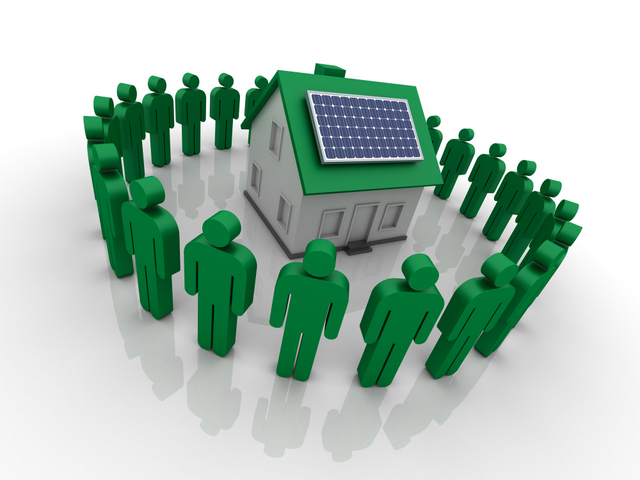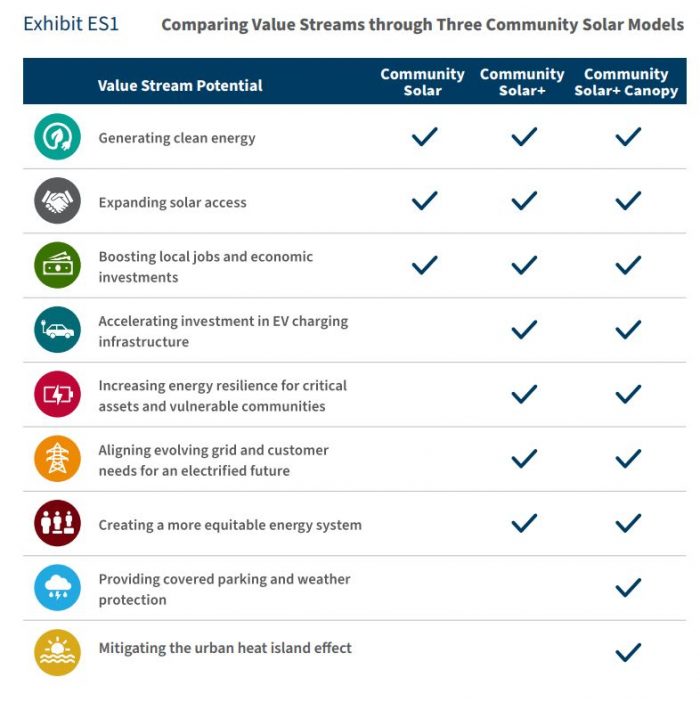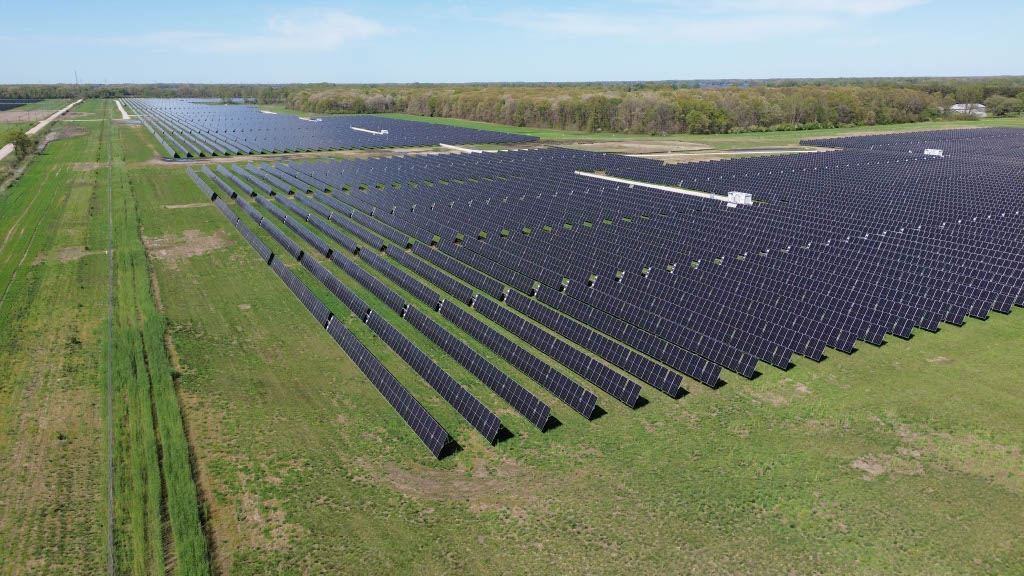Community solar is a path to the future if policymakers plan for it

Community solar can often win bipartisan hearts and minds in a way that more traditional PV project development does not. The key is clearly in that first word – community – but a well-designed community solar project needs to truly deliver results that meet (even exceed) the objectives of that community. Is it boosting up disenfranchised residents? Is farmland preservation a priority? Are there (hopefully) big clean energy and electrification goals that need to be achieved?
Community solar can be designed to achieve any and, potentially, all of these goals at once. Examples abound across the country now, with states like New Jersey mandating more than half of a project’s output benefit low and moderate income (LMI) residents, and with a similar LMI focus being included in a California bill that is inching to becoming law.
Simultaneously, community solar can also help private and public entities attain ESG or carbon reduction. In the ag space, community solar can aid in crop production or result in other benefits, such as protecting soils and providing habitat for many important species. In urban centers, electrification goals can be economically and equitably achieved with minimal disturbance to existing infrastructure.
“The use of smart siting in renewable energy projects such as community solar is critical to achieving New York’s clean energy goals while also protecting and managing the health of our natural resources,” says Echo Cartwright, New York Director of Climate Mitigation, The Nature Conservancy.
And yet, community solar can still meet its fair share of opposition because, again, this involves the community. Some of the arguments against solar in a community are ill-informed or overtly made in bad faith (not worth addressing here), but sometimes local stakeholders have a point, as noted in the Community Solar Project Siting whitepaper the Solar Energy Industries Association (SEIA) published earlier this year.
“… some stakeholders may ignore legitimate arguments from neighbors about the ways in which a sizable solar project may impact local lands. It is understandable that neighborhoods accustomed to a particular viewshed would raise concerns about solar, or other types of land use change.”
That’s why SEIA heavily recommends community solar be designed to result in ecosystem and agricultural benefits, beyond relying on just clean energy production and dollar savings as key drivers. Site selection (and policymaker involvement in selection) is crucial.
“Policymakers in particular should follow existing well-established tools to avoid, minimize and/or mitigate any environmental impacts associated with community solar construction. For decades, builders seeking federal, and in some cases state approvals, have been required to assess the environmental impact of their proposed projects, and develop alternatives that address environmental concerns.”
Community solar as land preservation resource
Community solar project development does not interfere with the natural habitat the way that say a commercial shopping center or residential housing development on farmland would. Solar panels, posts and racking can always be removed at the end of a project lease term and even help encourage long-term sustainable farming and increase the land’s value over time.
A great way to streamline things is a state identifying “solar opportunity zones,” which Massachusetts included in recent legislation that would consider such factors as:
- the availability of land
- the state of distribution and transmission infrastructure and its ability to connect new projects
- receptiveness of local communities and
- the overall need to build more clean energy projects, among others.
“In other words, the legislation would create a comprehensive planning process that includes stakeholders and would encourage the development of community solar projects. Solar development in these pre-determined zones would be supported by additional incentives or other supportive policies such as favorable tax treatment and would be aligned with grid infrastructure planning and investment,” the report notes.
“Community solar represents an important feature of America’s clean energy future, providing homeowners, renters, and businesses greater access to the benefits of solar energy generation,” stated Ethan Winter, Northeast Solar Specialist, American Farmland Trust. “With potentially thousands of community solar facilities to be developed across the country, effective guidelines are needed for developers, landowners and local permitting jurisdictions to advance projects that are designed to avoid, minimize, and mitigate impacts on our most productive farmland.”
Community solar as path to the future

While environmental conservation is one concern, so is the simultaneous need for the rapid evolution of our electric grid and transportation infrastructure.
A recent report from the Rocky Mountain Institute (RMI) introduces the concept of “Community Solar+” — a whole-systems approach to planning and deploying community solar projects to capture greater economies of scale and advance community-wide sustainability and equity goals.

“At its core, Community Solar+ is doing more with less. So, rather than just focusing on the clean energy component, projects can be designed to also help build out EV charging, prepare the grid for an electrified future, mitigate urban heat island effects, and more,” said Madeline Tyson, RMI manager and report co-author. “For local governments, this means better managing competing priorities for limited city budgets.”
The report provides a new framework, an illustrative financial model, four case studies, and recommendations for state and local governments, utilities, and developers to think more deliberately about full project value when planning and deploying new community solar projects. Additional values that can be achieved through Community Solar+ include:
- Accelerating investment in EV charging infrastructure
- Increasing energy resilience for critical assets and vulnerable communities
- Aligning evolving grid and customer needs for an electrified future
- Creating a more equitable energy system
- Providing covered parking and weather protection
- Mitigating urban heat island effects
The vehicle-to-grid charging movement could be especially crucial. Vehicles would be able to act as grid assets, potentially aggregated and administered through a community solar program, and as the report notes, the innovation could go beyond EVs and be shared infrastructure for “electrified food trucks, community greenhouses, multiuse or multifamily building electrification, transit stations, or other shared community assets that may have high electricity demand (i.e., flexibility potential or resilience importance).”
Inherent in all of that is a more equitable community plan, as long as that is planned with that as a goal in mind at the outset.
“Momentum is building for more community solar. But let’s deploy community solar in a way that truly creates community assets,” said Matthew Popkin, RMI manager and report co-author. “I hope Community Solar+ gives state, local, and utility leaders the tools and creative license to think outside the box in pursuit of a more electrified, resilient, and equitable clean energy future.”





Comments are closed here.